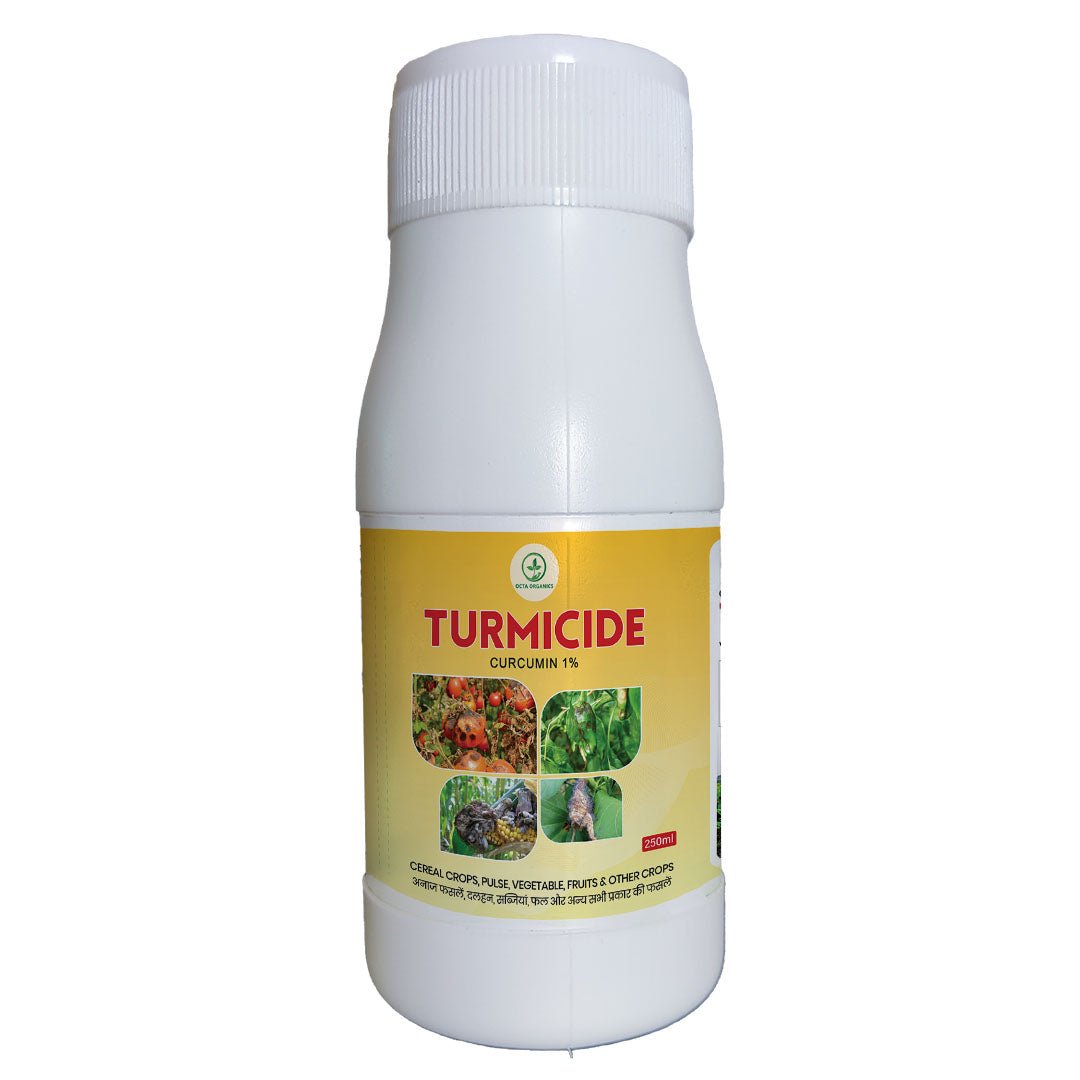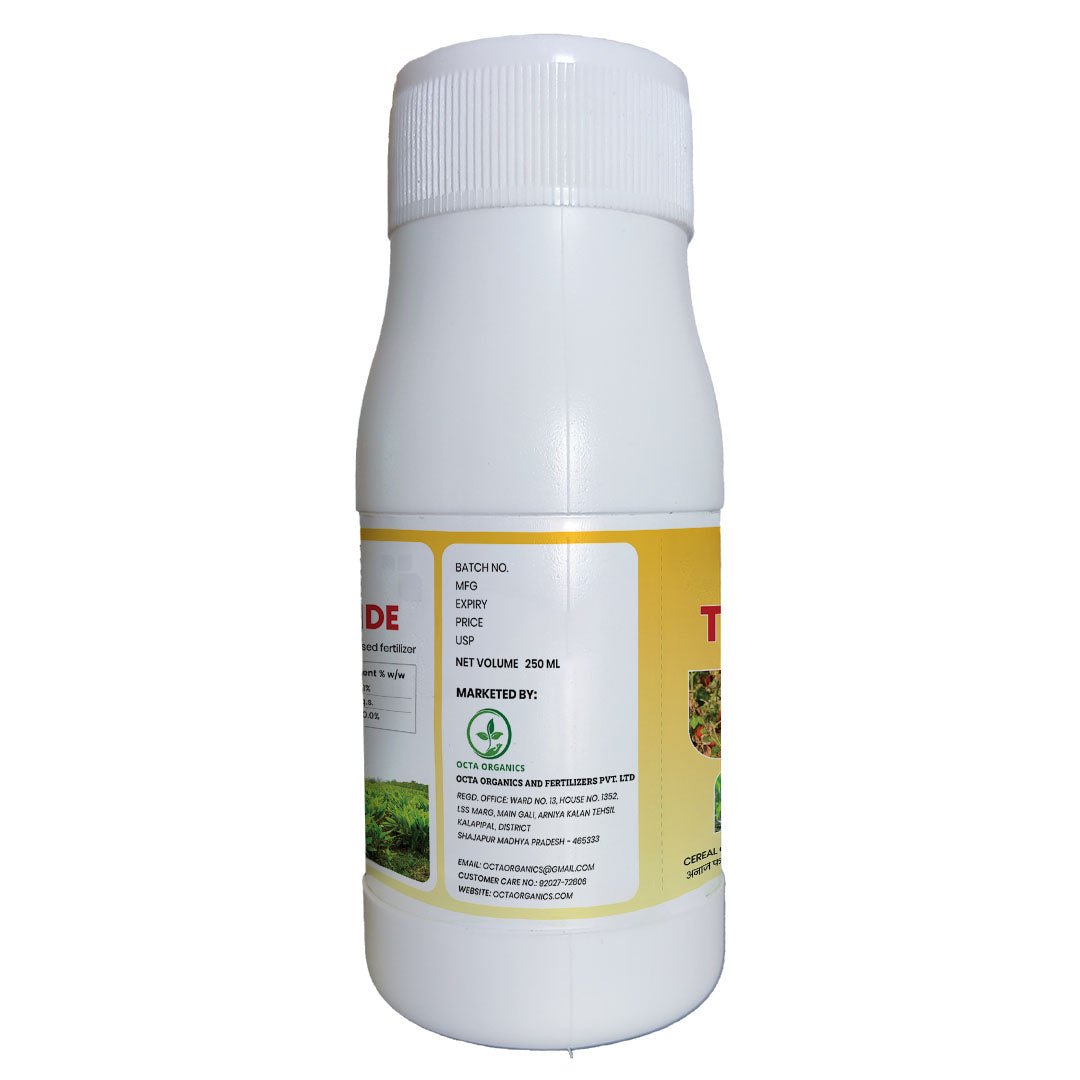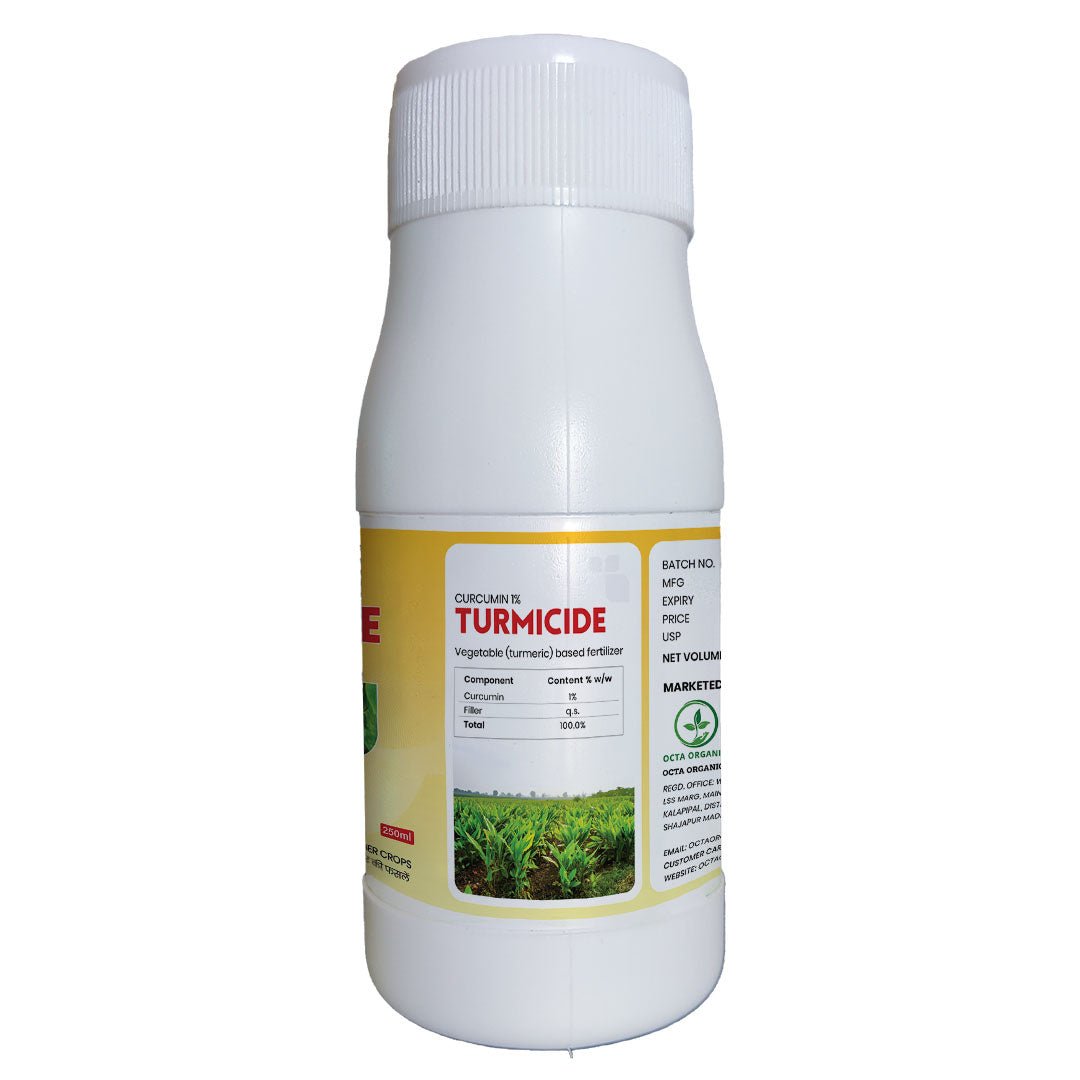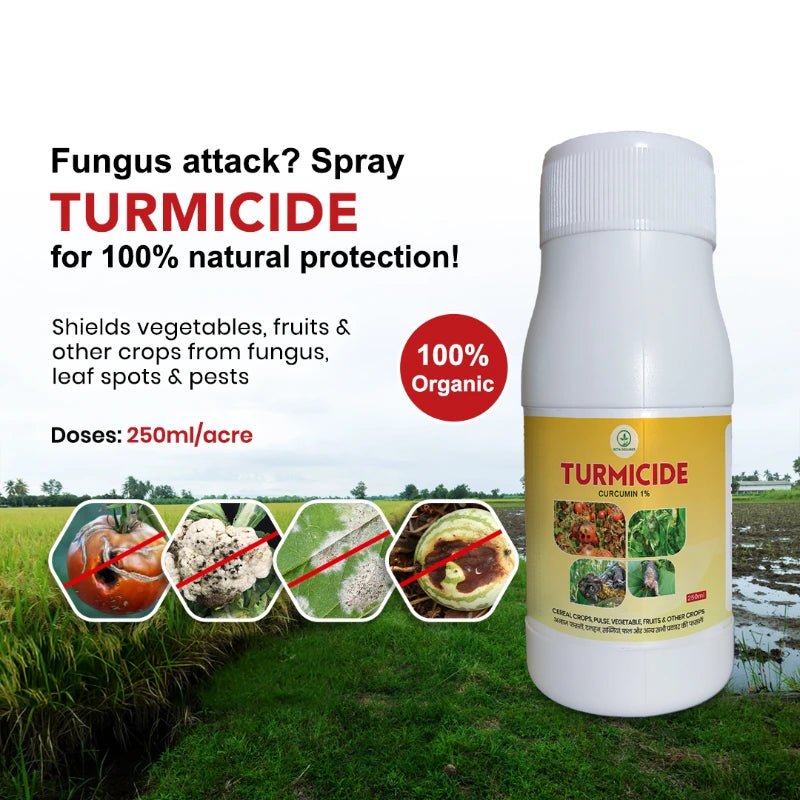Octa Organic
Turmicide – Natural Solution for Fungal Disease Control in Plants
Turmicide – Natural Solution for Fungal Disease Control in Plants
⭐⭐⭐⭐⭐ (100+ verified buyers)
🏷️ Use Code OCTA10 and Get 10% OFF on orders above ₹499!
Couldn't load pickup availability
🚚 Estimated delivery: 5–8 business days across India
✅ Free Shipping on All Orders
✅ Cash on Delivery Available
✅ All Taxes Included – No Hidden Charges
Turmicide is a 100% natural, environment-friendly fungicide containing 1% Curcumin, extracted from Curcuma longa (Turmeric) plants. It offers powerful antifungal, antibacterial, and antiviral properties to:
- Strengthen plant immunity
- Protect crops from fungal infections
- Improve resistance to environmental stress
- Provide a toxin-free, residue-free solution
How It Works
Turmicide works systemically, allowing plants to absorb and store it for a long time. It is naturally released during fungal attacks or stress conditions, helping the plant recover and build immunity for future threats.
It effectively combats biotic stress (from fungal pathogens) and abiotic stress (from heat, drought, etc.).
Key Component: Curcumin
Curcumin acts as a natural antioxidant by neutralizing harmful free radicals in plant tissues. This enhances plant health and resilience to environmental challenges. Turmicide is ideal for organic and sustainable farming.
Key Benefits of Turmicide
- Controls major fungal diseases such as:
- Early Blight
- Late Blight
- Pod and Stem Blight
- Downy Mildew
- Powdery Mildew
- Cercospora Leaf Blight
- Sclerotinia Stem Rot
- Brown Stem Rot
- Botrytis (Grey Mould)
- Rice Blast
- Effective against several plant-pathogenic fungi
- Boosts plant immunity
- Acts as both preventive and curative
- 100% natural, toxin-free, and leaves no residues
- Ideal for sustainable and organic agriculture
Technical Details
- Technical Name: Curcumin 1% Botanical Fungicide
- Dosage: 250 to 300 mL per Acre or 2.5 - 3 ML Per Liter of Water
- Application: Apply as a foliar spray during early crop stages or at the first sign of fungal symptoms
Why Choose Turmicide?
Turmicide provides a natural, effective, and chemical-free solution to common fungal diseases. It not only protects crops but also promotes long-term plant health—keeping farmers, consumers, and the environment safe.
Share




Frequently Asked Questions
What causes fungal infections in plants?
Fungal infections in plants are primarily caused by pathogenic fungi that thrive in specific environmental conditions like high humidity and poor ventilation. These fungi spread through spores dispersed by wind, water, soil, or vectors like insects. Factors like plant stress, wounds from pruning or insects, and even contaminated soil can create entry points for these fungi. Once established, fungi can cause various diseases like mildew, rust, and blight that result in stunted growth and poor yield.
How do I treat powdery mildew naturally?
To treat powdery mildew naturally, you can use organic fungicides like sulfur, neem oil, or potassium bicarbonate. For milder cases, a baking soda solution (1 tablespoon per gallon of water) or a milk spray (1:10 milk to water ratio) can be effective. Ensure good air circulation around plants by pruning and spacing them properly. Avoid overhead watering and remove infected plants. For quick, effective, and long-lasting treatment of powdery mildew, consider using Turmicide by Octa Organics.
How to control early blight in tomatoes?
To manage early blight in tomatoes, practice sanitation by removing and destroying infected plant debris. Improve air circulation by pruning lower leaves and staking plants. Water at the base of plants to avoid wetting foliage, and consider mulching to prevent soil splash. If needed, apply an organic fungicide early in the season or at the first sign of infection. Organic fungicides, like Turmicide, are highly recommended to control early blight diseases in tomatoes while keeping the environment safe.
How long does fungicide last?
The effectiveness of fungicides can vary, but they generally last for a couple of weeks. Most fungicides need to be reapplied every 7-14 days, especially during periods of active plant growth and when conditions favor disease development. Factors like the specific fungicide, the plant being treated, and environmental conditions influence the duration of protection. Organic fungicides are believed to last longer as compared to chemical-based fungicides and offer long-term protection.
How often should you spray your plants with fungicide?
Fungicide application frequency depends on several factors, but generally, you should reapply fungicides every 7-14 days, or as directed on the product label. During rainy periods, reapplications may be needed more frequently, especially for contact or protectant fungicides, as they can wash off. Systemic fungicides may offer longer protection. Always check the specific product label for reapplication instructions and consider disease pressure and weather conditions before spraying.
What are 5 diseases caused by fungi in plants?
The five most common diseases caused by fungi in plants are downy mildew, powdery mildew, early and late blight, fusarium wilt, and brown stem rot. In downy mildew, a white or gray powdery coating forms on different parts of the plants. While powdery mildew is quite similar, it is characterized by the formation of yellow or white patches on the upper side of leaves. Fusarium wilt results in the yellowing and wilting of leaves, while brown stem rot causes browning and weakening of plant stems.
How do fungal diseases spread in plants?
Fungal diseases primarily spread through spores, which can be dispersed by wind, water (rain), and soil. These spores can land on susceptible plants, enter through natural openings like stomata or wounds, and then colonize the plant tissues. Infected seeds, transplants, and plant debris can also act as sources of fungal pathogens. When these spores reach a suitable host plant and environmental conditions are favorable, they germinate and begin to infect the plant.





